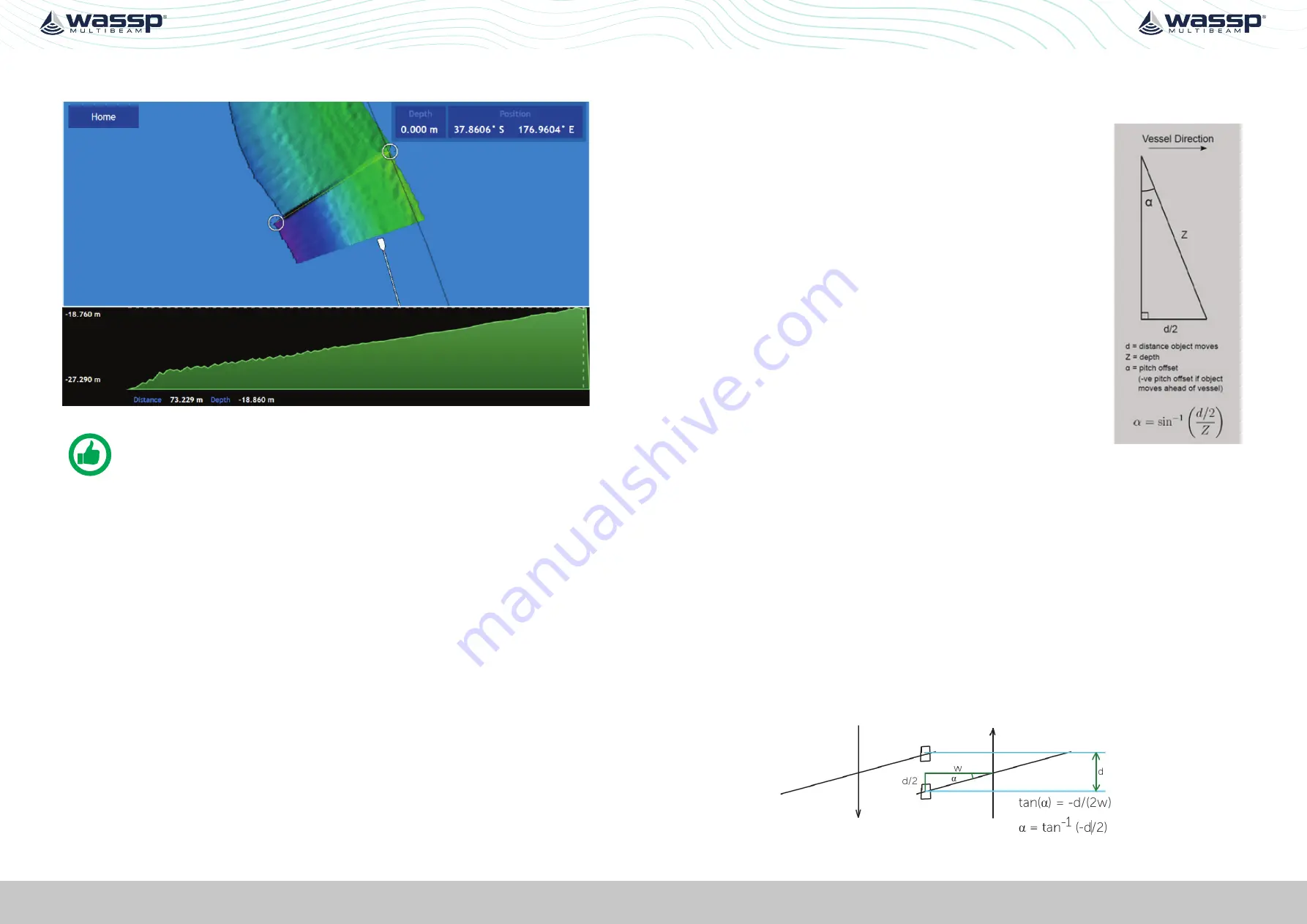
Page 54 of 102
Page 55 of 102
Doc: DRX Installation
Version: 7.1 January 2021
Doc: DRX Installation
Version: 7.1 January 2021
DRX INSTALLATION MANUAL
DRX INSTALLATION MANUAL
5. Measure the entire width of the swath at the point you have measured the
displacement. This value is
H
(73.229m in this case).
Figure 30. Measurement of Swath Width H
NOTE: the measurement is the distance of the line in this case rather than
the depth change – this depth change across the swath is not used.
6. Use a calculator (one is present in Windows) to compute tan(
a
) (
D/H
) e.g.
a. Run window Calculator, Select ‘View: Scientific Mode’
b. Enter
D
(e.g. 2.8)
c. Press ‘/’
d. Enter
H
(e.g. 73.23m)
e. Press ‘=’
f. Select ‘Inv’
g. Press ‘tan
-1
‘
h. Record this number as the Patch Roll Quantity
7. To compute the sign (positive roll or negative roll) of the Roll patch look at the
Starboard side-track as journey B is made.
If this is shallower than track A then the sign for the roll offset is positive. If this is
deeper then the depths from track A the sign for the roll offset is negative.
8. Enter the Roll offset value computed into the Roll Offset setting in the
DATA SETUP
section of the
DRX SETUP WEBPAGES
.
See “5.2.4. Data Setup Tab” on page 39.
9. Repeat these steps in a different area, or on a different Mapping database. If there is
still a significant difference > 50cm add any difference generated to the Roll offset
already computed and then test again. It should be possible to generate a roll offset
within 0.1 degrees.
5.3.3. Pitch Offset
If GPS time delay can be completed using variable speed,
See ‘Test 2 For use with DGPS’
“5.3.1. GPS Time Delay” on page 50
then attempt to compute pitch offset as follows:
Pitch Correction
Requires: >10m depth, Distinct Object, DGPS or better,
Accurate Time Lag.
1.
Once the Time Lag is accurately ascertained using
the variable speed method described in the previous
commissioning step, a Pitch Correction value can be
ascertained by having the Ship travel over a distinct object
in opposite directions.
2.
The object will move if the Pitch offset is incorrect and
the use of trigonometry will determine the Pitch offset
between the Motion Sensor and the Transducer.
3.
Enter this number into the Pitch Offset in the
DATA SETUP
section of the
DRX SETUP WEBPAGES
.
Figure 31. Pitch Corrections
5.3.4. Heading Offset
Requires: DGPS or better, Distinct Object and >10m depth.
To determine an accurate heading correction between the heading sensor and the
transducer orientation we need high accuracy position sensors and corrected seafloor
data.
1.
Approach a small, distinct seafloor feature so that the port side of the swath covers
the object.
2.
Pass over the object so that the starboard side of the swath crosses the same
object in the opposite direction. It is important that these two tracks are on exactly
parallel heading lines.
3.
Use basic trigonometry to calculate the required heading offset that will allow the
object to remain stationary. Redo the heading test to check that the heading offset
was entered correctly.
tan(
α
) = -d/(2w),
α
= tan-1 (-d/2)
If object moves as above the sign is negated otherwise remove the -ve sign from this






























